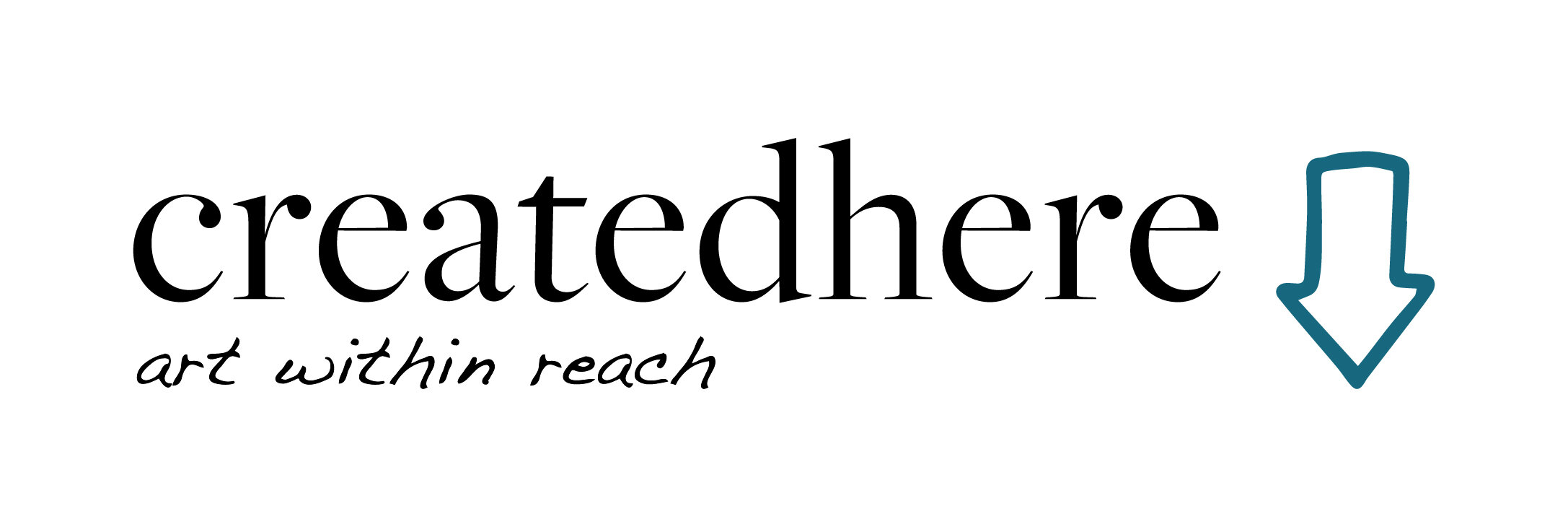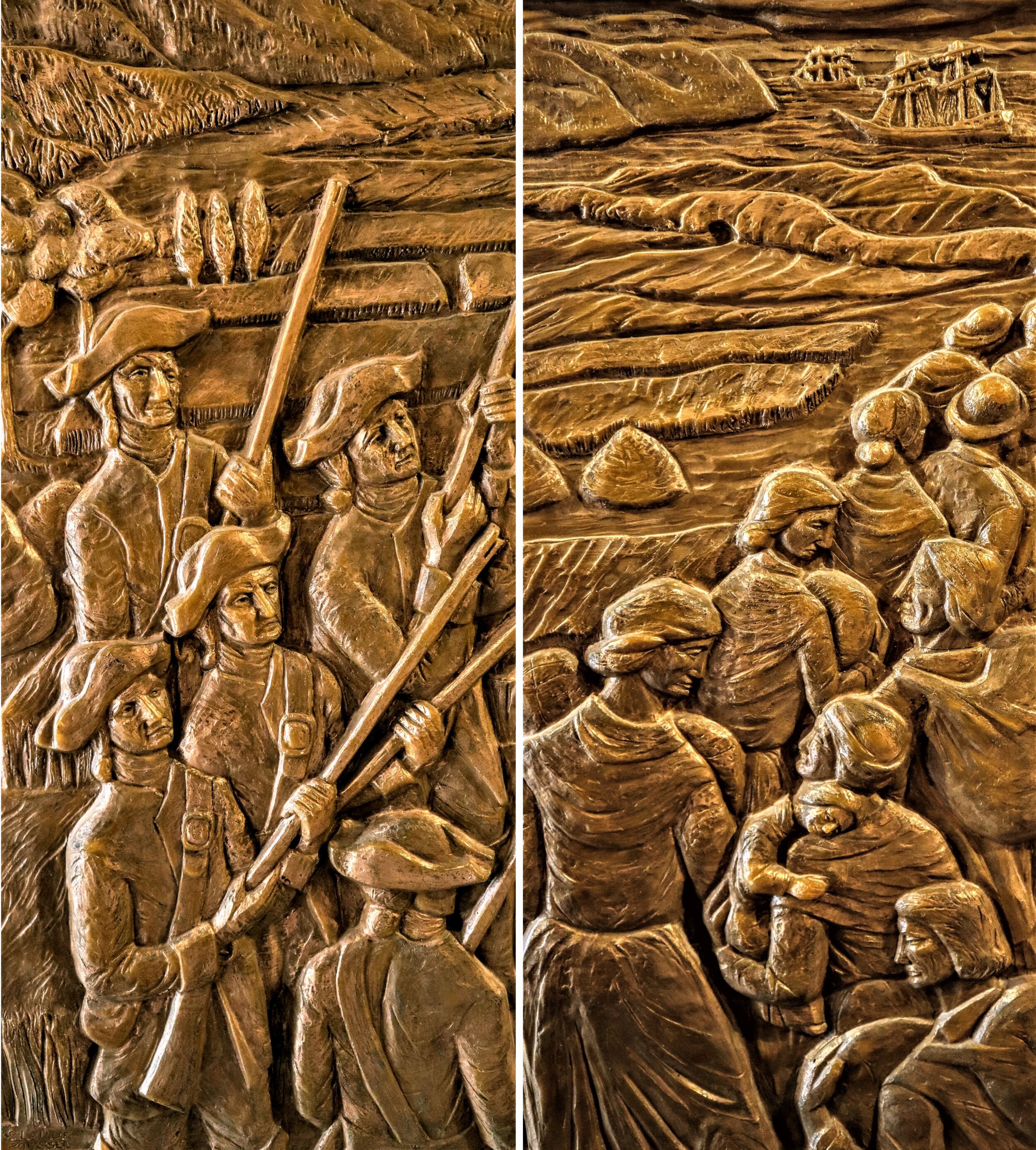Part One | The Renaissance of Contemporary Acadian Art in New Brunswick
A Contribution to the Acadian-ness Movement by Artists Claude Roussel and Paul Édouard Bourque
by Anik Marchand
Part 1 of 4: Brief History of Acadian Culture
It’s no secret that Canada is considered inclusive, accepting of others and their cultures as well as their beliefs, but…
…what happens when Canada marginalizes one of its oldest communities and forgets about their history? What happens in the discourse of art when one of Canada’s communities is left behind? Can we fully understand our country’s Acadian culture when we don’t have all the players on the team? Perhaps not.
In New Brunswick, there is a lively crowd of people who call themselves, ‘Acadians,’ and have been living on the soil for centuries. Acadian artists, however, have often been left out of the Canadian art scene. Artists, such as Claude Roussel and Paul Édouard Bourque, who have had a major influence on the renaissance of modern art in Francophone New Brunswick, have not often been heard of outside of the Maritimes. There have been some forgotten histories, and therefore our art history books are not only incomplete, but inadequate.
Before we dive into the renaissance of Acadian art, it is important to understand the distressing history of Acadians. Throughout the early development of Acadia, as early as 1613, the British and the French battled constantly over land settlements, both sides vying for the region’s rich lands until 1755. The Acadians refused to obey the new British Governor of Nova Scotia, Lieutenant General Francis Nicholson, and his request for Acadians to be loyal to the British Crown. In the summer of 1755, the British army drove the French out of Beaubassin, NS, burning their land, homes, and everything they owned. This marked the start of the Acadian Deportation.
The Deportation, or cultural genocide, where thousands perished, did not end in 1755. It would only be in 1765 that a limited number of Acadians would reluctantly be allowed to return to certain parts of Nova Scotia and New Brunswick. In 1778, the Acadians who sought refuge in Saint Jean, PEI and Cape Breton Island, NS were gathered together and forced to return to France on ships as the British, under General Wolfe and General Amherst, recaptured Louisburg on Cape Breton Island, a pivotal operation of the Seven Years’ War. Roughly 10,000 Acadians in total settled in the Southern United States in Louisiana as well as on the Eastern Coast of Maine.
Figure 1.1 | Claude Roussel, La déportation, 1986
As one of Canada’s first Francophone minority communities under Anglophone majority rule, Acadians continued to be viewed as a lesser people; they were marginalized in New Brunswick due to continual use of spoken French, and differences in religious and cultural practices. As one can imagine, the Acadians have had a difficult past, and discrimination is no stranger to them. It has only been in the last few decades that the relationship between the Anglophones and Acadians have begun to improve. Due to this major setback in their history, they have not had the opportunity to express themselves in their province, let alone in the art scene, prior to the 1960s. This would ultimately change with Acadian artist, Claude Roussel.
Figure 1.2 | Claude Roussel in his Edmundston Studio finishing up the limestone sculpture Beavers,
A pioneer of modern Acadian art, Claude Roussel (Canadian, born 1930) studied at l’École des beaux-arts de Montréal, from 1950 to 1956, under the tutelage of the best artists in Quebec and the influences of Quebec’s artistic revolutions of Le Refus Global, 1948, and Les Automatistes, 1941–1960. Roussel not only admired but practised their expressive forms of art, implementing the use of bold colours and abstract forms within his own work after his studies.
Figure 1.3 | Claude Roussel, Man and Research, 1962
Paul Édouard Bourque (Canadian, born 1956), a visual artist whose practice is based on the construction versus deconstruction of imagery, has created paintings, drawings, printings, and installations. For over 40 years, Bourque has shown his work all over the world and is represented in many collections, both in public and private. Since 2015, Bourque has curated several important exhibitions and art-based projects. It is also important to note that Bourque was once a student of Roussel, and Bourque’s presence on the Acadian art scene has been impactful.
Figure 1.4 | Paul Édouard Bourque, Mikey, 1982
Figure 1.5 | Paul Édouard Bourque, Mikey, 1984
This Story is Continued HERE
Thanks to generous funding from the Strategic Initiatives Fund
Images:
Figure 1.1
Claude Roussel, La déportation, 1986
78 × 35 cm each, Polyester paste bas-reliefs diptych
Collection of Parks Canada’s Grand-Pré National Historic Site in Nova Scotia
© Claude Roussel (Photo: Francois Gaudet)
Figure 1.2
Claude Roussel in his Edmundston Studio finishing up the limestone sculpture Beavers,
1959 for Lord Beaverbrook Fountain in Officer’s Square.
Collection of the City of Fredericton, NB.
© Claude Roussel
Figure 1.3
Claude Roussel, Man and Research, 1962
183 × 75 × 8 cm, Cement and thick glass sculpture
Collection of the University of New Brunswick
© Claude Roussel (Photo: John Leroux)
Figure 1.4
Paul Édouard Bourque, Mikey, 1982
67 × 52 cm, Screen print and mixed media on Masonite
© Paul Édouard Bourque (Photo Jim Dupuis)
Figure 1.5
Paul Édouard Bourque, Mikey, 1984
61 × 53 cm, Photocopy and mixed media mounted on Masonite
© Paul Édouard Bourque (Photo Jim Dupuis)
Wait, There’s More!
If you loved this article, checkout Acadian Art: The Tenacity & Influence of the Acadian People by Georgette Bourgeois.








